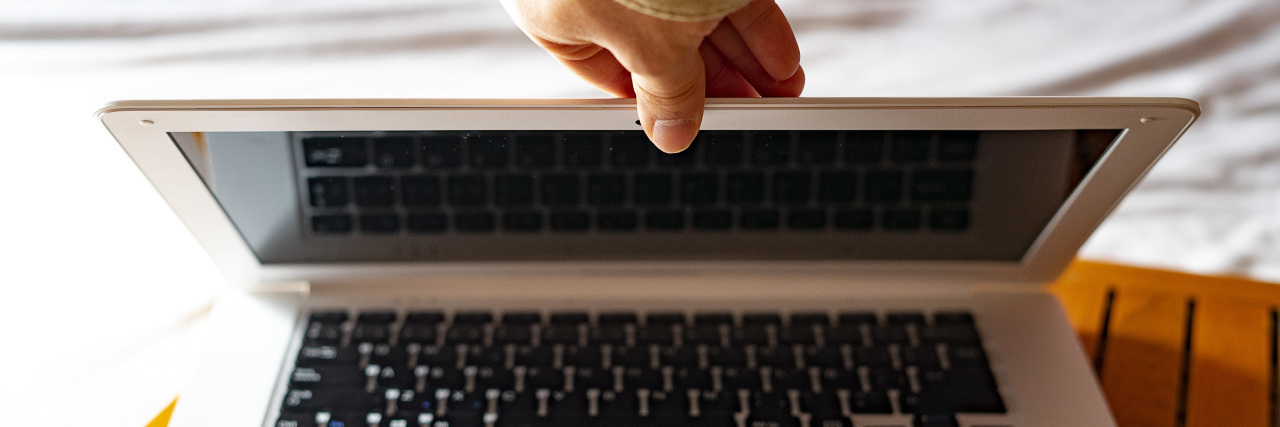I have been disabled my entire life with several genetic conditions, auditory disabilities and a compilation of psychological disabilities. Then, in 2017, I fell severely ill with chronic infections that lasted for three consecutive years. I spent most of my time alone in bed. I experienced excruciating chronic pain that left me unable to walk up and down a few stairs or get out of bed for something to eat. I was isolated and grieving. I probably spent at least half of my time crying alone (well, my dog was with me at least). Throughout my life, I have missed countless events, appointments, education options and relationships because of inaccessibility.
Accessibility features that are necessary for disabled people — including but not limited to curbside food and medications, virtual appointments, increased delivery options, and hybrid/virtual models for work, school and events — were suddenly created during the COVID-19 pandemic when nondisabled people needed them. Yet, disabled people have been advocating to rightfully receive these accessibility options long before the pandemic.
I have always had to view the world from a disability-accessibility perspective. Most people have the privilege not to think about it, but inaccessibility is part of our regular. When those of us who are disabled needed accessibility, they said it was not an option. Impossible. An inconvenience. A burden. Not the same. Lesser. Unfair.
Some of us pushed at the expense of our health and chronic pain.
Some of us lost jobs, education, grades, opportunities, doctor appointments, therapy or that restaurant food nondisabled people threw fits about not being able to access during stay-at-home. But no one batted an eye when we could not access any of these things for our entire lives. Generally, nondisabled people continue to stay silent now that accessibility options are taken away again.
And I am livid. I am livid not just for myself but for the creative and worthy disability community as we are left behind and ignored. Again. Places of employment continue to eliminate the work from home option when it does not alter the job. Insurance companies may not continue virtual coverage. Curbside options are being eliminated. Standardized tests for schools that cost disabled people hundreds to thousands of dollars in order to access accommodations are being reinstated. The list never seems to end.
To be clear, there is nothing “wrong” with the desire to be in-person. I understand these are major transitions for people, and I also look forward to safe in-person options. But there is something wrong when that means accessibility options are eliminated. There is something wrong when nondisabled people continue to center themselves in the conversation and do not advocate for accessibility. Unemployment, isolation and inaccessibility are not new to disabled people, and they do not end just because the pandemic restrictions end. The isolation for many disabled people continues to be overlooked and underestimated.
Nondisabled people need to understand that while “returning to normal” may be a glimpse of hope and excitement for them, it is also a time of grief and anxiety for many disabled people. A “return to normal” means the accessibility adaptions that were permitted for abled people during the pandemic will be stripped away despite our cries. We are reminded again of our dehumanization.
“Normal” was ableist and inaccessible. It denied us rightful accommodations, perpetuated workplace and schooling inequality, disproportionate rates of poverty and inaccessible healthcare. It isolated us. “Returning to normal” is a clear reminder the problem is not that accessibility is unrealistic. It is that accessibility is selectively applied to nondisabled people.
Accessibility is not a mere preference. Accessibility is a necessity. Yet, our access needs are often viewed as an inconvenience or “demanding.” Inaccessibility applies to not only physical spaces—it includes ableist attitudes, beliefs and policies that render our existence as lesser, undesirable, unwelcomed and burdensome.
Inaccessibility has drastic social and medical consequences, including low self-worth, suicide, delayed doctor appointments, and a flare-up of symptoms when we are forced to push beyond natural limitations of our bodies and minds. Inaccessibility contributes to internalized ableism that minimizes our pain and says the real problem is us. Inaccessibility, quite literally, kills us.
Please remember there are disabled children who finally had an accessible schooling option. There are disabled people who finally had access to a therapist for the first time. There are disabled people who finally felt a sense of community when they could access a virtual event. There are disabled college students who finally had professional development options for the first time from virtual conferences and interviews. There are disabled people who could finally get food on their own when they are unable to walk or stand for periods of time.
Please remember to include us in your “normal.”
For more complimentary reading, check out the following articles from The Mighty:
Getty photo by Cavan Images.

